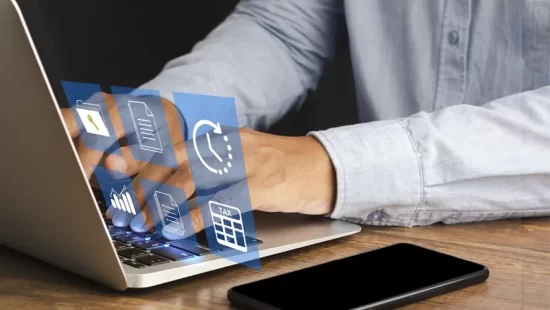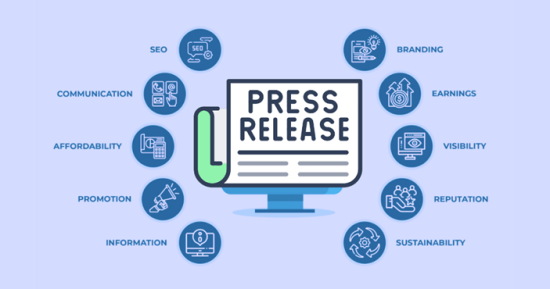
When it comes to managing your student loans, one question looms large: When does interest start to accrue? Understanding the answer to this question is crucial for effectively managing your debt and minimizing its long-term impact on your finances. In this comprehensive guide, we will explore the ins and outs of student loan interest, providing you with the information you need to navigate this complex landscape.
So, let’s get started. Have you ever wondered from when does education loan interest start? Or why does it matter? You’re not alone. Many people are unsure of when interest actually begins to accrue on their student loans. Is it the day you receive the loan? The day you graduate? Or is there some other trigger that starts the interest clock ticking?
In this guide, we’ll answer when does interest start on student loans. Whether you’re a current student, recent graduate, or someone in the repayment phase, this guide will equip you with the knowledge to make informed decisions about your student loan debt.
Understanding Student Loan Interest Accrual
When it comes to managing your student loans effectively, understanding how interest accrues is crucial. By grasping the concept of interest accrual, you can make informed decisions that can impact the total cost of your loan.
What is Interest Accrual?
Interest accrual refers to the gradual accumulation of interest on your student loan balance over time. As you repay your loan, interest continues to build on the remaining balance. This can significantly impact the total amount you owe, making it essential to stay informed about interest accrual.
How Interest Impacts Total Loan Cost
Interest has a direct impact on the total cost of your loan. The higher the interest rate and the longer it takes to repay the loan, the more interest you will accrue. This means that even a small increase in interest can result in a significant difference in the amount you ultimately repay.
To minimize the impact of interest on your loan, it’s important to explore strategies such as making extra payments or refinancing your loan to obtain a lower interest rate. Taking proactive steps to manage interest can help save you money and shorten the overall repayment period.
The Timeline of Interest on Different Student Loans
The timeline of interest accrual can vary depending on the type of student loan you have. It’s important to understand how interest accumulates over time to effectively manage your student debt. In this section, we will explore the specific timelines for interest accrual on different types of student loans, including subsidized and unsubsidized federal loans, as well as Direct PLUS and private student loans.
Interest Accrual on Subsidized vs. Unsubsidized Federal Loans
Subsidized federal loans are a type of student loan where the government pays the interest while you are in school, during the grace period, and during authorized deferment periods. This means that interest does not accrue on subsidized federal loans during these periods, making them a more affordable option for students.
On the other hand, unsubsidized federal loans begin accruing interest from the day the loan is disbursed. Interest on unsubsidized loans accrues throughout your enrollment, grace period, and deferment periods, resulting in a higher overall loan cost compared to subsidized loans.
Interest Accrual on Direct PLUS and Private Student Loans
Direct PLUS loans and private student loans have different interest accrual timelines compared to federal loans. With Direct PLUS loans, interest begins accruing from the day the loan is disbursed, similar to unsubsidized federal loans. It’s important to note that Direct PLUS loans do not offer grace periods, so interest will continue to accumulate during this time.
Private student loans, which are offered by banks and other financial institutions, have their own interest accrual timelines that vary between lenders. It’s essential to carefully review the terms and conditions of your private student loan to understand when interest begins to accumulate and how it affects your loan balance over time.
Understanding the timeline of interest accrual on different student loans is vital for planning your loan repayment strategy. By being aware of when interest starts to accrue, you can make informed decisions about loan repayment and prioritize paying off higher-interest loans first.
When Does Interest Start on Student Loans?
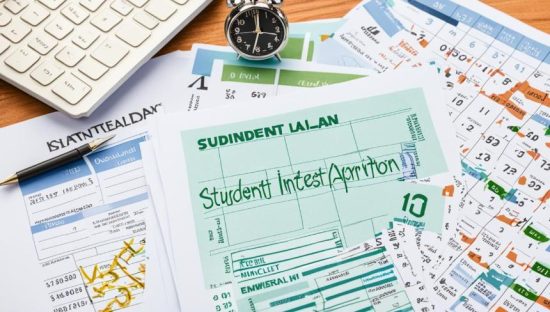
Understanding when interest starts accruing on student loans is essential for effective loan management. The timing of interest depends on the type of loan you have and specific scenarios. Let’s explore the details.
For federal subsidized loans, interest starts accruing after you graduate, leave school, or drop below half-time enrollment. However, during your enrollment and authorized deferment periods, the government pays the interest on your behalf, making these loans more favorable.
On the other hand, federal unsubsidized loans and private loans start accruing interest as soon as they are disbursed. This means that interest begins accumulating right away, even if you’re still in school or in a grace period.
It’s important to note that interest accrues daily, based on the loan balance and interest rate, and is added to the principal amount. This process, known as compounding, can significantly increase the total amount you owe over time.
To illustrate this point, here’s an example: consider a $10,000 student loan with a 5% interest rate. If you defer payments for four years while in school, the interest accrued during that period would be approximately $2,000, resulting in a new loan balance of $12,000.
In summary, interest on student loans starts accruing at different times depending on the type of loan. Understanding when interest begins accumulating will help you make informed decisions regarding your repayment strategy and overall loan management.
| Loan Type | When Interest Starts Accruing |
|---|---|
| Federal Subsidized Loans | After you graduate, leave school, or drop below half-time enrollment |
| Federal Unsubsidized Loans | As soon as the loan is disbursed |
| Private Loans | As soon as the loan is disbursed |
Understanding the timing of interest accumulation is crucial for effectively managing your student loans and minimizing the overall cost of your debt.
Strategies for Managing Interest on Your Student Loans
Effectively managing the interest on your student loans is crucial for minimizing the overall cost of your loans and achieving financial stability. Here are some key strategies and tips to help you manage interest and navigate your student loan repayment journey:
1. Make Timely Payments
One of the most important strategies for managing interest on your student loans is to make timely payments. Paying your loans on time not only helps you avoid late fees but also reduces the amount of interest that accrues over time. Set up automatic payments or create reminders to ensure you never miss a payment.
2. Explore Refinancing Options
If you have high-interest student loans, refinancing may be a viable option to consider. By refinancing, you can potentially secure a lower interest rate, which can significantly reduce the amount of interest you pay over the life of your loan. Research different lenders and compare their rates and terms before deciding to refinance.
3. Implement Effective Repayment Strategies
Developing a repayment strategy can help you manage your student loan interest effectively. Consider strategies such as the debt avalanche or debt snowball method to prioritize your loans and pay off high-interest debt first. Making extra payments whenever possible can also help you reduce interest and pay off your loans faster.
4. Take Advantage of Loan Forgiveness Programs

Loan forgiveness programs can provide relief from the burden of student loan interest. Research federal and state programs that offer forgiveness options for eligible borrowers. Public Service Loan Forgiveness (PSLF) and Teacher Loan Forgiveness are just a few examples of programs that can help you manage your student loan interest and potentially have a portion of your loans forgiven.
These are just a few strategies that can help you effectively manage the interest on your student loans. By staying proactive and informed, you can minimize the impact of interest and work towards achieving financial freedom.
Impact of Grace Periods on Student Loan Interest
Grace periods can have a significant impact on student loan interest. Understanding how grace periods vary by loan type and navigating interest accumulation during these periods is crucial for effectively managing your student loans. Let’s explore the different aspects of grace periods and their impact on student loan interest.
How Grace Periods Vary by Loan Type?
Grace periods can vary depending on the type of loan you have. Federal student loans typically offer a standard grace period after you graduate, leave school, or drop below half-time enrollment. This grace period provides a temporary reprieve from making loan payments and can give you time to secure employment and get financially stable.
Private student loans, on the other hand, may have varying grace periods depending on the lender’s policies. Some private lenders offer grace periods similar to federal loans, while others may not provide any grace period at all. It’s important to carefully review the terms and conditions of your loan agreement to determine the specifics of your grace period.
Navigating Interest Accumulation During Grace Periods
While grace periods provide temporary relief from making loan payments, it’s important to note that interest may still accrue during this time. The impact of grace periods on student loan interest can vary depending on the type of loan, whether it’s a subsidized or unsubsidized federal loan or a private loan.
Subsidized federal loans do not accrue interest during the grace period. This means that the government covers the interest that would have otherwise accumulated. On the other hand, unsubsidized federal loans and private loans typically accrue interest during the grace period.
To navigate interest accumulation during grace periods, consider making voluntary interest payments during this time, if possible. This can help reduce the overall interest that will be capitalized and added to your loan balance when the grace period ends. Additionally, staying informed about the specifics of your loan and having a repayment plan in place can help you manage interest effectively.
| Loan Type | Subsidized/Unsubsidized | Grace Period | Interest Accumulation During Grace Period |
|---|---|---|---|
| Federal Loans | Subsidized | 6 months* | No |
| Federal Loans | Unsubsidized | 6 months* | Yes |
| Private Loans | Varies by lender | Varies | Yes |
This table provides a simplified overview of grace periods for different loan types. Keep in mind that specific grace period durations and interest accumulation policies can vary based on individual circumstances, loan programs, and lender-specific terms.
How Capitalization Affects Your Student Loan Balance?
Capitalization is a critical factor that can have a significant impact on your student loan balance and the overall cost of your loans. To fully understand the implications of capitalization, it’s important to grasp the process of capitalization on federal student loans and the types of events that can trigger it.
The Process of Capitalization on Federal Student Loans
Capitalization occurs when the interest that has accrued on your student loan is added to the principal balance, resulting in a higher loan balance. This process typically happens during periods when your loan enters a new status, such as the end of a grace period or when transitioning from an in-school status to a repayment status.
When capitalization occurs, the outstanding interest is added to the principal balance, and future interest accrues based on the new higher balance. This means that you’ll not only be paying interest on the principal loan amount but also on the accumulated interest that has been capitalized.
It’s essential to note that the frequency at which capitalization occurs can vary depending on the type of federal student loan you have. Some loans may capitalize interest annually, while others may capitalize interest at other intervals.
Types of Events Triggering Capitalization
Several events can trigger capitalization on federal student loans. Here are a few common triggers:
- Transition from a deferment or grace period to the repayment status
- End of an in-school status, such as graduating or leaving school
- Defaulting on your loan
- Changing repayment plans
- No longer being eligible for loan forgiveness or other program benefits
- Consolidating your loans
It’s crucial to be aware of these events as each one can lead to capitalization, which can significantly increase your loan balance over time.
Exploring Federal Student Loan Interest Rates for 2023-24
Understanding the current federal student loan interest rates is crucial for managing your loans effectively. The interest rates on federal student loans for the 2023-24 academic year have a significant impact on the total cost of borrowing and repayment timelines. In this section, we will provide an overview of the fixed interest rates on federal student loans and compare them across different types of loans.
Fixed Interest Rates on Federal Student Loans
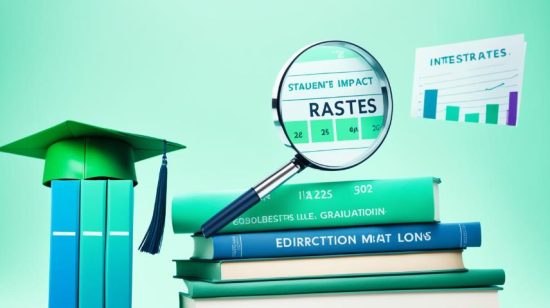
One of the distinct advantages of federal student loans is that they offer fixed interest rates, ensuring consistent monthly payments throughout the repayment period. Fixed interest rates provide stability and predictability for borrowers, as they do not fluctuate with market changes.
For the 2023-24 academic year, the fixed interest rates on federal student loans are as follows:
| Loan Type | Interest Rate |
|---|---|
| Direct Subsidized Loans (Undergraduate) | 4.53% |
| Direct Unsubsidized Loans (Undergraduate) | 4.53% |
| Direct Unsubsidized Loans (Graduate/Professional) | 6.08% |
| Direct PLUS Loans (Parents and Graduate/Professional Students) | 7.08% |
Comparing Interest Rates Across Loan Types
While the fixed interest rates on federal student loans provide stability, it is essential to compare the rates across different loan types to determine the most cost-effective options for borrowing. In general, undergraduate students have access to lower interest rates compared to graduate and professional students.
It’s important to consider the interest rates in conjunction with the features and benefits of each loan type to make an informed decision. For example, subsidized federal loans do not accrue interest while the borrower is in school, whereas unsubsidized loans and PLUS loans start accruing interest immediately.
By comparing the interest rates and terms of different federal loan types, you can make an informed decision that aligns with your financial goals and circumstances.
Private Student Loan Interest: What You Need to Know
When it comes to private student loans, it’s important to have a clear understanding of how interest works. Private student loan interest rates can vary greatly depending on the lender, your creditworthiness, and market conditions. This section will provide key insights into private student loan interest, including fixed vs. variable rates and choosing the right repayment plan.
Interest Rates: Fixed vs. Variable
One of the crucial decisions you’ll need to make when taking out a private student loan is whether to opt for a fixed interest rate or a variable interest rate.
A fixed interest rate remains the same throughout the life of your loan, providing stability and predictability to your monthly payments. This can be advantageous if you prefer a consistent payment amount over the long term, as it allows you to plan your budget accordingly.
On the other hand, a variable interest rate can fluctuate over time, potentially resulting in changes to your monthly payments. Variable rates are typically tied to a benchmark, such as the prime rate or the London Interbank Offered Rate (LIBOR). While variable rates may start lower than fixed rates, they can rise or fall with market conditions. If you’re comfortable with the potential for payment fluctuations, a variable rate may offer the opportunity to secure a lower interest rate initially.
It’s essential to carefully consider your individual financial situation, risk tolerance, and long-term goals when deciding between a fixed and variable interest rate for your private student loan.
Choosing the Right Private Loan Repayment Plan
Private student loans often provide more flexibility in repayment options compared to federal student loans. When selecting a repayment plan for your private student loan, you’ll want to assess your financial capabilities, future income prospects, and loan terms to make an informed decision.
Here are a few common repayment plans available for private student loans:
- Standard Repayment: Under this plan, you make fixed monthly payments over a set period of time. This is a suitable option if you have a stable income and can comfortably meet the required payments.
- Graduated Repayment: With this plan, your payments start lower initially and gradually increase over time. This can be beneficial if you expect your income to rise steadily in the coming years.
- Income-Driven Repayment: Some private lenders offer income-driven repayment plans, which adjust your monthly payments based on a percentage of your income. This can be helpful if you anticipate variable or lower income in the near term.
Tip: Different lenders may offer different repayment plans. Be sure to carefully review the options provided by your chosen lender and select the one that aligns best with your financial goals and circumstances.
How to Calculate Interest on Student Loans?
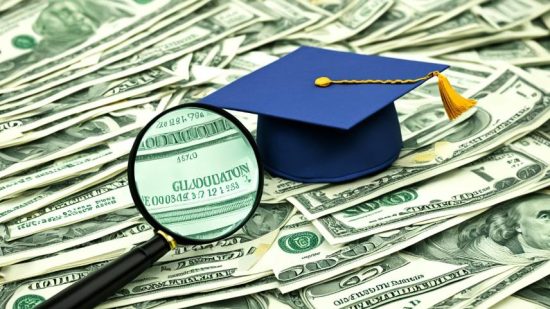
Calculating interest on student loans is essential for understanding the true cost of your debt. By knowing how to calculate interest, you can make informed decisions about repayment strategies and budgeting. In this section, we’ll provide you with a step-by-step guide on how to calculate interest on your student loans, along with an explanation of the daily interest calculation process and how to interpret your loan’s amortization schedule.
Daily Interest Calculation Explained
The daily interest calculation method is commonly used to determine the amount of interest that accrues on your student loans each day. To calculate the daily interest, you’ll need to know the loan’s interest rate and outstanding balance. Here’s how to calculate it:
- Start by converting the annual interest rate to a daily rate. Divide the annual rate by 365 to get the daily interest rate.
- Multiply the daily interest rate by the outstanding balance to calculate the amount of interest that accrues each day.
- Keep in mind that as you make payments towards your loan, the outstanding balance will decrease, resulting in lower interest charges.
By understanding the daily interest calculation, you can see how even small payments made regularly can save you money in the long run. It’s important to stay consistent with your payments to minimize the overall interest cost of your student loans.
Understanding Your Loan’s Amortization Schedule
Your loan’s amortization schedule provides a detailed breakdown of each payment you make, including the allocation between principal and interest. It helps you visualize how your payments affect the balance over time. The schedule typically includes the payment date, payment amount, principal balance, interest payment, and remaining balance.
Reviewing your loan’s amortization schedule can give you a clear understanding of how much interest you’re paying each month and how it changes over the life of your loan. It can also help you plan strategically to pay more towards the principal or adjust your repayment plan if needed.
Refinancing Student Loans to Save on Interest
If you’re looking to save on interest and reduce the overall cost of your student loans, refinancing can be a viable option for you. By refinancing, you have the opportunity to secure a new loan with better terms, such as a lower interest rate, which can significantly impact your long-term savings.
One of the main benefits of refinancing is the potential to lower your monthly payments. With a lower interest rate, you can reduce the amount of interest that accrues over the life of your loan, ultimately saving you money. Additionally, refinancing can also allow you to combine multiple student loans into one, simplifying your repayment process.
To navigate the refinancing process effectively, it’s important to consider a few key factors. Start by researching different lenders and comparing their loan terms and interest rates. Look for lenders that specialize in student loan refinancing and offer attractive options tailored to your needs. Once you find a suitable lender, gather all your necessary documentation, such as proof of income and student loan statements, to streamline the application process.
Before refinancing, it’s essential to evaluate your financial situation and determine if it aligns with the requirements and benefits of refinancing. Keep in mind that refinancing federal student loans with a private lender means forfeiting certain federal benefits, such as income-driven repayment plans and loan forgiveness programs. Therefore, it’s crucial to weigh the potential savings against the loss of these benefits before making a decision.
FAQs on Interest Start on Student Loans
When does interest start on student loans for federal loans?
For federal Direct Subsidized Loans, interest accrues after the grace period, typically six months after graduation. For federal Direct Unsubsidized Loans, interest accrues when the loan is disbursed.
When does interest start on student loans if I defer my payments?
During deferment, interest on federal Direct Subsidized Loans does not accrue. Still, interest on Federal Direct Unsubsidized Loans and loans continues to accrue and will be added to the principal balance.
When does interest start on student loans for private loans?
For private student loans, interest typically starts accruing immediately after the loan is disbursed, although the exact terms can change depending on the lender.
When does interest start on student loans while I am still in school?
For federal Direct Unsubsidized Loans and most private loans, interest begins accruing while you are still in school, although you may only be required to make payments after graduation.

